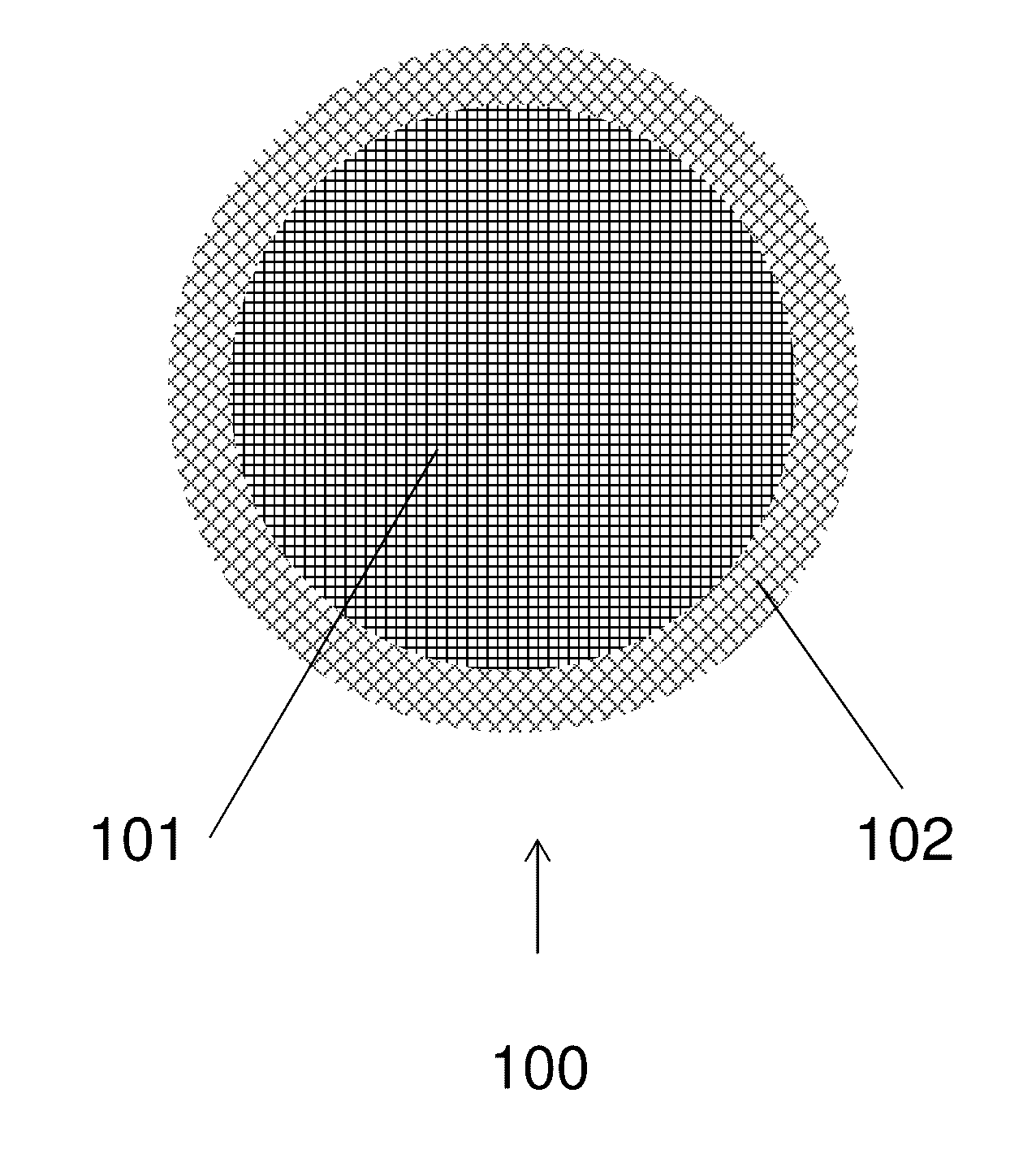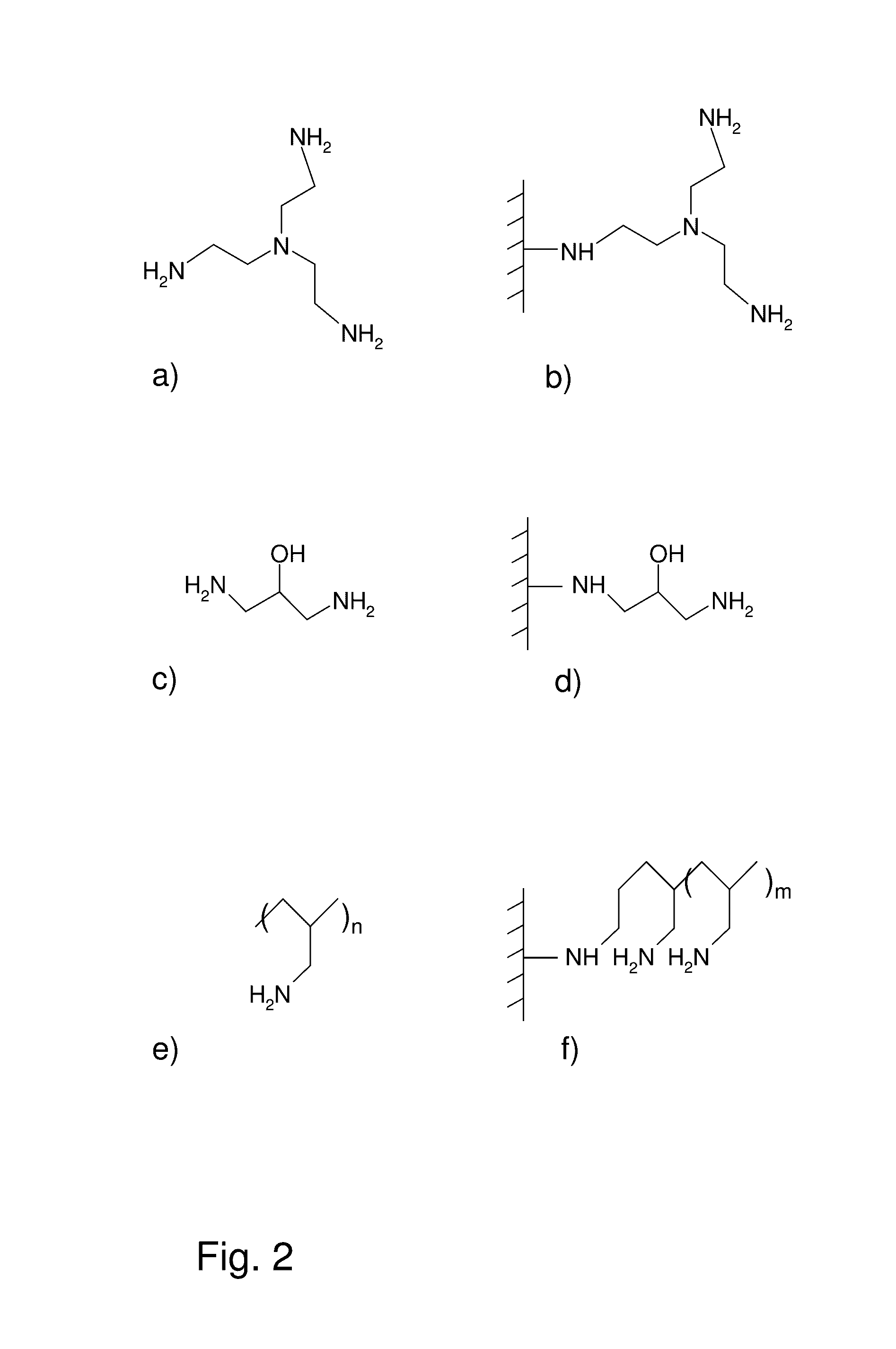Separation matrices for purification of biological particles
- Summary
- Abstract
- Description
- Claims
- Application Information
AI Technical Summary
Benefits of technology
Problems solved by technology
Method used
Image
Examples
example 1
Synthesis of Prototypes.
[0053]Support Particles
[0054]The support particles used were highly crosslinked agarose beads, prepared according to the methods described in U.S. Pat. No. 6,602,990, which is hereby incorporated by reference in its entirety. The beads had a volume-weighted average diameter (D50,v) of 88 micrometers and a pore size distribution such that 69% of the pore volume was available to dextran molecules of Mw 110 kDa. This can also be expressed such that Kd for dextran 110 kDa on the beads was 0.69, when measured according to the methods described in “Handbook of Process Chromatography, A Guide to Optimization, Scale-Up and validation” (1997) Academic Press, San Diego. Gail Sofer & Lars Hagel eds.ISBN 0-12-654266-X, p. 368.
[0055]Allylations
[0056]Intermediate 5803
[0057]400 mL (g) of support particles were washed with six gel volumes distilled water and then three gel volumes with 50% NaOH. The gel was then sucked dry and transferred to a 2 L round bottom flask. 775 mL ...
example 2
Binding Capacities for Proteins on Prototypes.
[0098]Empty 96-well filter plates were filled with 6 μl gel per well. The method described in Table 3 was used during the plate experiments. The number of washes after incubation varied between two and three dependent of what was needed to wash out any unbound protein.
TABLE 3Method for plate experimentsStepVolume (μl)BufferExecutionEquilibration 3x200Buffer1 min shake + vacuumProtein100 + 100Protein60 min shake +additionsolution + BuffercentrifugationWashXx200Buffer1 min shake +Centrifugation
[0099]Analysis
[0100]Unbound protein is analyzed by absorbance at 280 nm and the concentration calculated from a calibration curve.
[0101]The amount of bound protein is calculated from the difference between the added protein and the amount of unbound protein.
[0102]From the concentration the capacity for each well is calculated.
[0103]The maximum capacity is expressed as g / L, this is based on calculations preparing the protein solution for each experime...
example 3
Cleaning of Fouled Prototypes.
[0158]This study was performed in 96-well filter plates with 800 microliters well size. The plate wells were filled with20 microliter matrix and fouled with an E. coli homogenate. Cleaning was performed with different regeneration liquids and the contaminants still left in the beads were forced into solution by boiling with 24 mM dithiotreitol (DTT) and 0.5% sodium dodecyl sulfate (SDS) to then be analysed with chip electrophoresis in a Caliper HT Protein LabChip system.
[0159]E.coli Lysate
[0160]To foul the media E.coli homogenate was used. Frozen E.coli homogenate was thawed and clarified through a glass fiber filter, followed by a 0.45 μm membrane filter.
[0161]Plate experiments
[0162]Empty filter plates were filled with 20 μl gel per well. The method described in Table was used during the plate experiments. One plate was run with every solution in triplicate. The incubation time for the CIP was 15 minutes.
TABLE 11Method for plate experimentsStepVolume (...
PUM
| Property | Measurement | Unit |
|---|---|---|
| Fraction | aaaaa | aaaaa |
| Fraction | aaaaa | aaaaa |
| Fraction | aaaaa | aaaaa |
Abstract
Description
Claims
Application Information
 Login to View More
Login to View More - R&D
- Intellectual Property
- Life Sciences
- Materials
- Tech Scout
- Unparalleled Data Quality
- Higher Quality Content
- 60% Fewer Hallucinations
Browse by: Latest US Patents, China's latest patents, Technical Efficacy Thesaurus, Application Domain, Technology Topic, Popular Technical Reports.
© 2025 PatSnap. All rights reserved.Legal|Privacy policy|Modern Slavery Act Transparency Statement|Sitemap|About US| Contact US: help@patsnap.com



